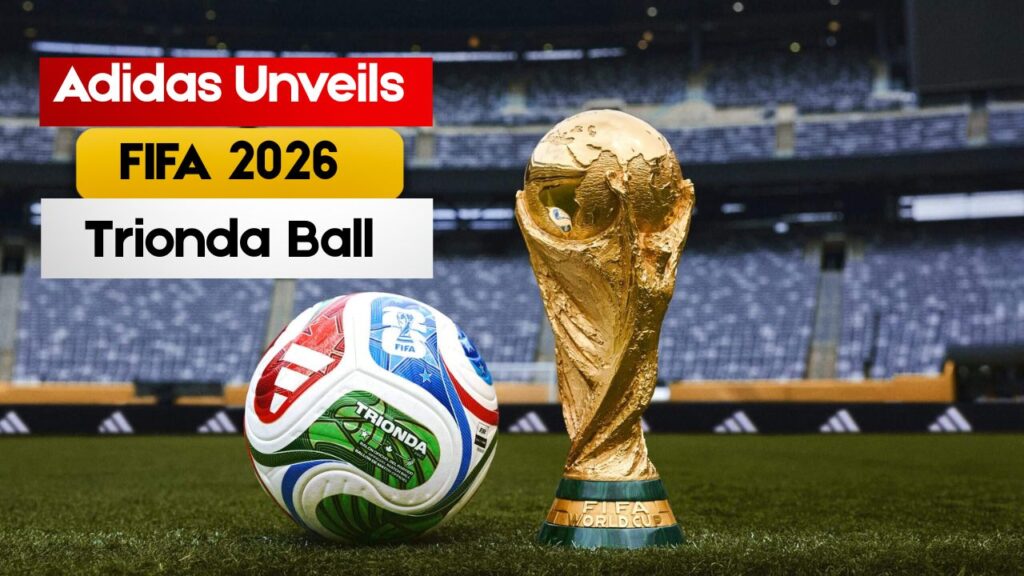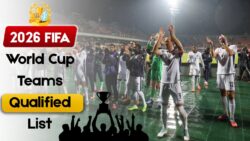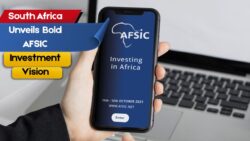Soccer balls used in World Cups are special. Each one tells a story that goes beyond the game. People remember the Telstar from old tournaments & the Brazuca from more recent ones. These balls were part of amazing goals and exciting matches that fans still talk about today. The crowds went wild when these balls hit the back of the net. Now the TRIONDA ball is ready for the 2026 World Cup. It will create its own history and memories just like the famous balls before it. Fans will see it fly through the air in big games. Players will use it to score goals that everyone will remember. The TRIONDA isn’t just sports gear – it will become part of soccer history.

The TRIONDA soccer ball brings together three host countries in one design. It works well in hot and cold weather and at any height above sea level. The ball shows off the culture of each nation through its colors and patterns. It also has new technology built into it. This helps everyone from fans to players and refs stay connected during games. No other World Cup ball has done this before. The TRIONDA sets a new standard for what a tournament ball can be.
We talked to two key people at adidas about their new TRIONDA project. Solene Stoermann who leads footwear & Hannes Schaefke who directs football concepts shared the story behind this innovation. They explained everything from how they picked the name to the design process and all the new technology inside it.
Let’s start with your name TRIONDA. What’s the story behind it? We’d love to know how you came up with it and what it means to you.
The name TRIONDA has a special meaning. It combines two parts: “Tri” and “Onda.” The “Tri” part stands for the three countries hosting the World Cup: the United States Canada and Mexico. This is the first time these nations will host the tournament together. We picked this name to show how these countries are working as one team. It’s a big deal because no World Cup has ever had three host nations before. The name helps people remember this historic partnership.
The word “Onda” comes from Spanish & means wave. But people also use it to talk about good vibes and positive energy. When someone asks “Que onda?” they want to know what’s going on or how things are feeling. This connects nicely to soccer because it represents new players showing up at the World Cup for the first time. Like a wave they arrive fresh and ready to make history. That’s why TRIONDA uses this name – it stands for the next group of players who will shape the future of the sport.
The name “wave” reminds us of fans in a stadium moving up and down together. It shows how football brings people together and creates excitement. When we joined “Tri” and “Onda” to name the ball we wanted to show how football connects different countries and their fans. The name tells a story about people coming together through sports. It’s about sharing good times and feeling like one big team. That’s what makes football so special.
The word “wave” means a lot to sports fans. Most people know the famous stadium wave where fans stand up one after another. It looks like a wave moving through the crowd. This action brings everyone together in a fun way. It shows what football is all about. People join as one big group to share happy moments. That’s why we picked TRIONDA as our name. It mixes these ideas into one word that feels right.
The ball shows how everything fits together nicely. Let’s talk about how the panels are arranged & why they chose this design.
TRIONDA has four main sections that split into twelve flowing parts. The design looks natural & smooth like waves moving through water. Each part bends & curves to show movement and energy. The whole shape reminds you of how soccer players move across the field during a game. Nothing about it is stiff or straight. Instead it feels alive and active just like the sport itself.
The logo shows three colored parts that stand for each country. The blue section is for America while the white part means Canada and the green piece shows Mexico. These three parts meet in the middle to make a triangle shape. This design tells us how these different countries work as one team. Even though each nation keeps its own identity they join forces to reach shared goals. The simple triangle in the center makes it clear that they are united in their mission.
The ball design needed more than just colors to tell the story. We added special symbols that people know from each country. The American stars Canadian maple leaf & Mexican eagle show up both in the design and as raised patterns on the surface. Players can see and feel these symbols when they hold the ball. This makes it easier to grip and creates a physical link to all three countries.
We added gold details to remind players of the World Cup trophy. This special touch shows that everyone who plays with this ball dreams of winning the biggest prize in soccer. The design is both practical and meaningful. It works well on the field and honors the sport’s culture & competitive spirit.
What steps did you take to make sure the design truly matched each country’s culture and style? We want to know how you kept things real & local when working on this project.
Solene Stoermann explains that being real and honest was their main focus. The team started working on the design more than three years before showing the ball to everyone. They wanted to do everything right. They began by asking people around the world to fill out an online survey. The survey asked about their favorite moments from old tournaments and what they hoped to see in 2026. It was important to include what fans wanted in the ball’s design from day one.
We developed the first versions of the ball and brought them to test in seven different cities that will host the tournament. It was really important to meet with real football fans in person. We wanted to make sure they liked how the ball looked and felt when they played with it. We checked everything about the ball including its colors patterns and feel. All these tests helped us make sure the ball would be special to the local people and football culture. The final design of TRIONDA came from both adidas and input from the host countries and their fans. This made it more than just another football – it became something that everyone helped create.
We had to test how players would do in many different cities. Some places were hot and others were cold. The altitude changed a lot between locations. Each stadium had its own playing style too. We needed to check how all these things would affect the players during games. So we made sure to test everything in each type of condition.
The 2026 World Cup ball needed special attention. The tournament will happen across Mexico USA and Canada in 16 different cities. Each place has different weather & playing conditions. Some cities are high up in mountains while others sit at sea level. The air feels different in each location too. That’s why we had to make a ball that works well everywhere instead of using just one standard design.
We tested TRIONDA at seven different places across the world. The ball needed to work well in many conditions. From Mexican cities up in the mountains to wet areas near the ocean in America. Players had to trust the ball and know it would act the same way every time they used it.
The ball’s design solved the main problems. The rough outer surface helps players control it better in all weather. The special pattern of panels makes the ball fly straight and steady during games. We made TRIONDA to work well for everyone while also looking good with its universal design.
Testing performance for this World Cup was a big challenge due to its size and location spread. How did your team handle the testing process across so many different places? The wide range of venues and distances between host cities must have created some unique testing needs. Can you tell us about your approach to making sure everything worked well?
The 2026 World Cup will be special because games will happen in 16 different cities across the USA Mexico and Canada. Each place has its own weather and height above sea level. This means a soccer ball needs to work well in many conditions. A ball that works great in cold Vancouver needs to also work in hot Miami & high-altitude Mexico City. That’s why we made TRIONDA to be reliable no matter where the games are played.
We tested the ball in many different places to make sure it works well everywhere. The rough surface looks good but also helps players hold the ball better when it’s wet or dry. The way we designed the panels helps the ball fly straight through the air so players know where it will go. We worked hard to make sure the ball feels the same for everyone no matter where they play or what the weather is like. The ball performs great in all situations & gives players a consistent feel during every game.
We want people to connect with TRIONDA in a special way. The World Cup ball means a lot to soccer fans and we designed this one to create good memories. When fans see TRIONDA we hope they feel excited and happy. The ball should remind them of great moments from the tournament & make them smile. We made it unique so people will remember it for years to come.
The soccer ball means a lot to fans. It reminds them of special goals & big games they watched. It brings back memories of visiting stadiums & seeing amazing plays. TRIONDA helps fans feel like they belong to something bigger. This ball shows how three countries and many different cultures can come together. Even though people are different all over the world the World Cup makes everyone feel like one big family. The ball is a symbol that unites fans from everywhere.
The TRIONDA ball stands out with its bright & eye-catching colors. We chose these bold colors to show the spirit of the host countries & create something new for the future. This ball breaks away from old designs & welcomes a new era of players to the World Cup stage. It’s a fresh take that looks toward tomorrow’s soccer stars.
Tell me more about why you said the ball has a heartbeat. What did you mean by that? It’s an interesting way to describe a ball and I’d like to understand your thinking behind it.
The ball has a sensor inside that helps track its movement. But thinking of it as a heartbeat makes more sense. When referees look at their screens during games they see each touch show up like a pulse. Every time someone passes the ball or it hits something it shows up on screen. Even small touches like handballs appear this way. This makes the ball seem alive as we watch the game. The technology doesn’t just track the ball – it gives it life.
Every soccer ball gets a special code now. Before this change we had no way to know which ball was used to score important goals. If teams used many balls during a game it was impossible to track them. But now we can find the exact ball that made history in big moments. This new system gives each ball its own story & makes it special during major games. It’s like giving the ball a real identity on the field.
Technology helps referees make better decisions during sports games. Video replays let officials check close calls and fix mistakes. Special systems like goal-line technology tell refs if the ball crossed the line. Some sports use instant replay booths where experts review plays from different angles. Communication devices help refs talk to each other on the field. These tools make games fairer and reduce human error. They also help refs manage the game better & deal with tough situations. Most major sports now use some form of tech to support their officials. This makes fans trust the decisions more & keeps the game running smoothly. The tech keeps getting better and helps refs do their jobs more accurately.
Soccer has become really fast in modern times. Refs need to make quick choices during games. The new smart ball helps them feel more sure about their decisions. At last year’s European Championship there was a good example. No one saw a handball but the ball’s tech showed exactly when it happened. The ball is also great for offside calls. It knows the exact moment when a player kicks it. It sends info to points around the stadium many times each second. This makes it easier for refs to make the right calls during games without waiting too long.
Adidas takes soccer equipment to the next level. While FIFA sets strict rules for soccer gear adidas goes even further to make better products. They test their balls shoes and other gear more thoroughly than required. Their research team creates new materials and designs that exceed FIFA’s basic requirements. This commitment to excellence helps players perform better on the field. Adidas doesn’t just meet the standards they set new ones. Their innovations often become the new normal in soccer equipment. They work closely with pro players to understand what athletes really need. This approach keeps adidas ahead of other sports brands. They prove that good enough isn’t enough when it comes to soccer gear.
Hannes Schaefke: We always push beyond basic requirements. FIFA has tough rules but we make ours even tougher. We test everything more than needed – from how heavy the ball is to how it bounces. When we added smart technology to the ball we did lots of extra testing in our lab. We also had players try it without telling them which ball was which. This proved that the connected ball feels and acts just like a regular one. We wanted to make sure that TRIONDA performs exactly the same way whether it has technology inside or not. Players can trust it completely during top-level games.
What emotions and reactions do you hope TRIONDA creates in people who see it or play with it?
A regular ball sits there doing nothing until someone kicks it. But TRIONDA is different. It combines smart technology with great design and expert craftsmanship to create something that feels alive. When players use it in the World Cup it becomes more than just sports equipment. It turns into a symbol of different cultures coming together. It shows off amazing athletic skills. It makes people feel strong emotions. That’s why TRIONDA stands out from other footballs.





